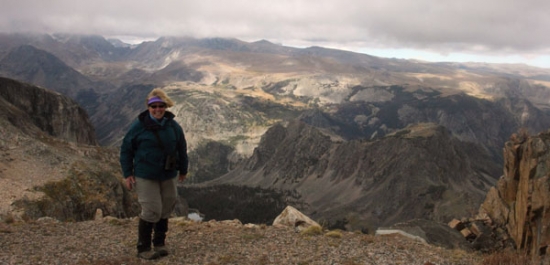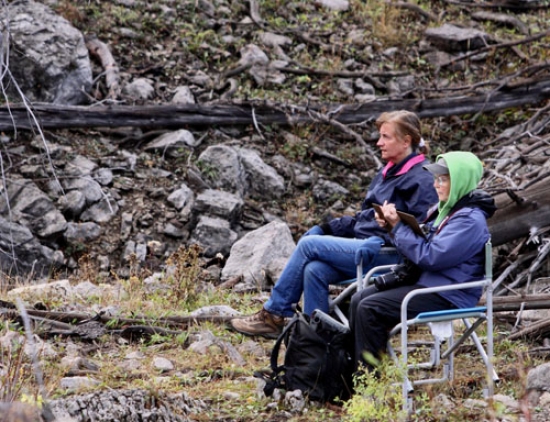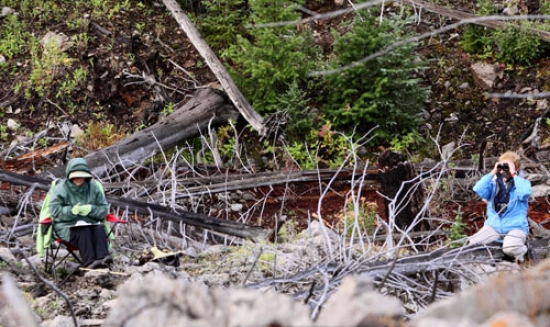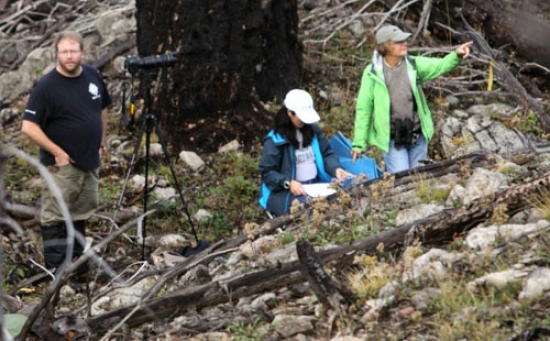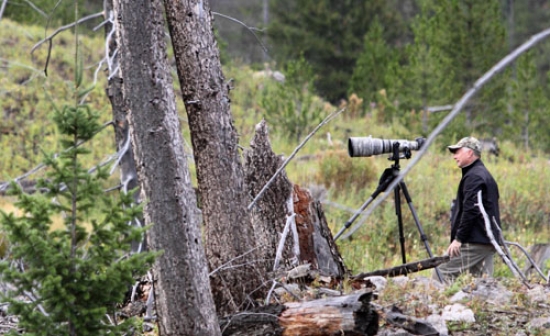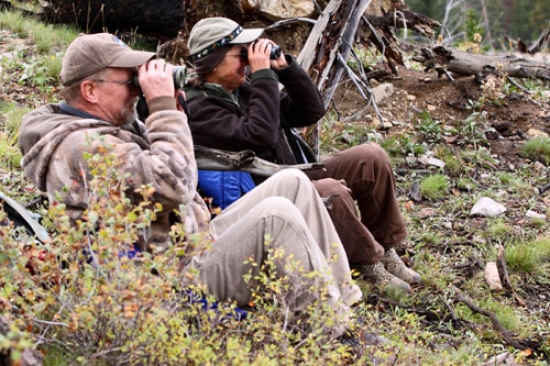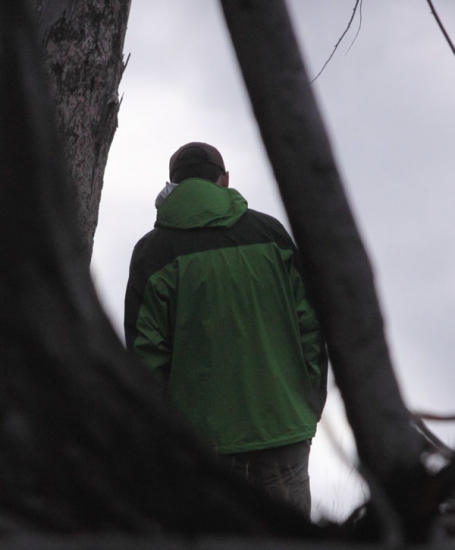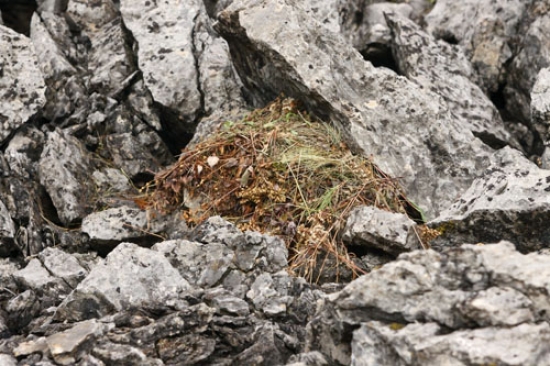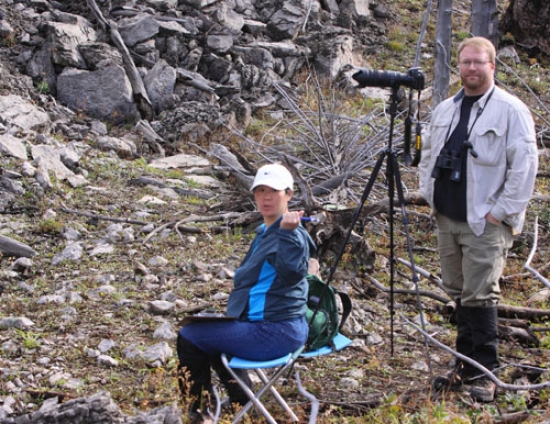Yellowstone Association Pica Class #2
A Day In The Life Of A Picaby Dan Hartman
Sept. 18, 2013
Last weekend we held our second pika class through the Yellowstone Association above our cabin. Basically its objective is observing a day in the life of a pika. The following is an account shared by guest reporter and pika class participant, Becky Wardl
Low, floating clouds and a cool fog greeted our Yellowstone Institute class Saturday, but our small group was eager to learn about “The Surprising Pika”. Instructor Dan Hartman described pika (Ochotona princeps) behavior, physiology and the pika habitat into which we were venturing to observe these tiny animals. Since Dan lives in Silver Gate, Montana, we walked only a short distance above his house and into old talus/rockslide slopes to find these rabbit “cousins.”
Almost immediately one of these observant herbivores announced our presence to the community by a repetitive “chirping” call. “Danger, predators coming!” Even though there were times our designated animal was denned or foraging in tall shrubs, over the next two days we documented a day in the life of a pika.
The territory I observed held a resident adult (probably female) and two younger pikas at the edges of the adult’s area. The adult spent a significant amount of time gathering aspen twigs with attached leaves, thistle, grasses, raspberry leaves (including a 12” raspberry branch with leaves attached.) These were quickly carried across the jumble of rocks and stowed either in the primary haystack or placed at the edge of the stack. Other observers noted similar gathering behavior, including rearranging articles in the haystack or adding sufficiently dried materials to the stack from secondary caches. Foraging behavior occurred but was not observed as often as gathering behavior. Part of the time when we couldn’t see the animal was possibly when the pika was resting or when foraging was taking place.
Young pikas spent significantly less time gathering food or foraging and noticeably more time resting, often on top of a log or rock near their smaller haystack. To our surprise, resting occurred in the open, in plain sight of us and other mammalian or avian predators. How do these tiny creatures survive when they don’t appear to have the skills or experience to build sufficient winter food stores or avoid predators?
The class observed similar vocalizations, feeding and gathering behavior when we traveled to Beartooth Pass. At just under 11,000 feet, the cool winds and damp air held the chill of approaching winter in which these tiny creatures will be living under 20 feet of snow. Survival for pikas whose habitat and thus life zone is quickly changing due to a warming climate seems a ways off for those at this elevation but is approaching faster for those at lower elevations.
